Business Intelligence Market Overview:
The global Business Intelligence (BI) market is experiencing robust growth, driven by advancements in data analytics, increasing adoption across industries, and the growing need for data-driven decision-making. This market covers various applications, including predictive analytics, reporting tools, and data visualization. Our analysis provides a detailed examination of emerging procurement trends, focusing on cost-saving strategies through partnerships and the growing integration of digital tools to streamline processes.
Future procurement challenges in the BI space include the need for accurate demand forecasting, supported by digital procurement solutions to improve responsiveness. Strategic sourcing and effective procurement management are crucial for optimizing BI solutions and ensuring the continuous evolution of analytics capabilities. As competition intensifies, organizations are leveraging market intelligence and procurement analytics to enhance supply chain efficiency and stay ahead in the market.
The outlook for the Business Intelligence market is positive, with steady growth expected through 2032 due to several key drivers:
- Market Size: The global Business Intelligence market is projected to reach USD 63.17 billion by 2032, growing at a CAGR of around 7.26% from 2024 to 2032.
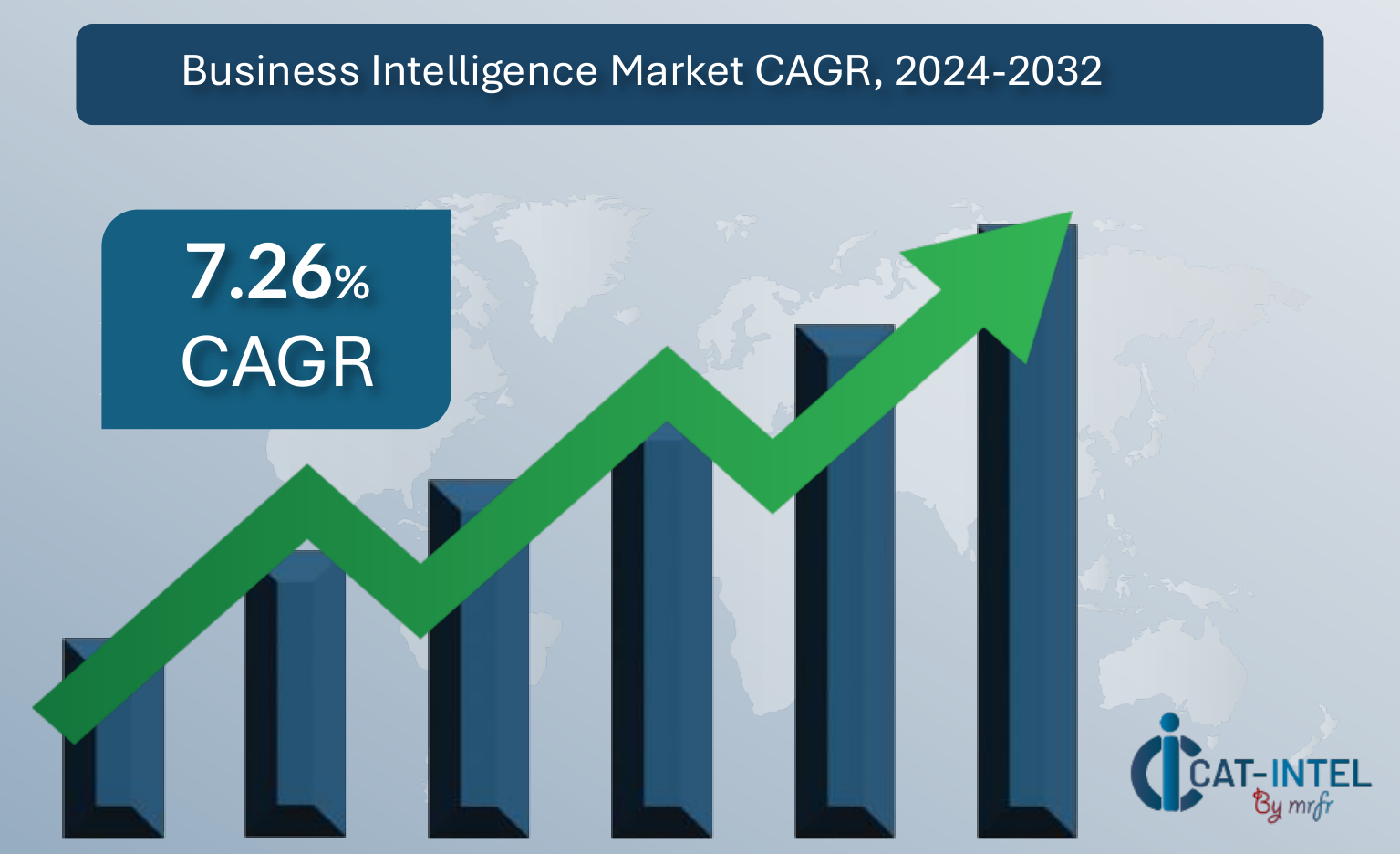
- Sector Contributions: Growth is primarily driven by:
- Data-Driven Decision-Making: Growing reliance on data to inform business strategies and improve operational efficiency.
- Advanced Analytics: Demand for advanced analytics tools, including predictive and prescriptive analytics, is rising across industries.
- Technological Transformation and Innovations: Advancements in machine learning, artificial intelligence, and cloud-based BI platforms are revolutionizing the Business Intelligence market, improving data processing and decision-making capabilities.
- Investment Initiatives: Organizations are investing in cutting-edge Business Intelligence tools and platforms to enhance data accessibility and improve overall business performance.
- Regional Insights: North America leads the Business Intelligence market due to its strong technological infrastructure and high adoption rates, while emerging markets in Asia-Pacific and Latin America are seeing rapid growth due to increased digitalization and investment in analytics capabilities.
Key Trends and Sustainability Outlook:
- Enhanced Digital Integration: The adoption of cloud-based and AI-powered BI tools is streamlining data management and improving decision-making efficiency.
- Advanced Analytics Methodologies: The integration of machine learning and real-time data processing is driving improvements in BI solutions.
- Focus on Sustainability: Companies are increasingly prioritizing sustainable business practices, leveraging BI tools to monitor and reduce environmental impacts.
- Customization in Business Intelligence Solutions: Businesses are seeking tailored BI tools to address their specific industry and regulatory needs.
- Data-Driven Culture: The growing importance of data-driven decision-making is pushing companies to invest in robust BI systems for better strategic insights.
Growth Drivers:
- Demand for Data-Driven Insights: Companies are increasingly relying on BI tools for real-time, actionable insights to guide strategic decisions.
- Regulatory Compliance: The increasing regulatory requirements across industries are driving the need for Business Intelligence systems that ensure compliance and data integrity.
- Innovation in Analytics: New techniques in AI and machine learning are enhancing BI tool capabilities, enabling more accurate predictions and insights.
- Environmental Awareness: BI tools are being used to optimize sustainability practices, including tracking carbon footprints and resource utilization.
- Tailored Solutions: There is growing demand for customized BI solutions to meet specific business, industry, and regulatory needs.
Overview of Market Intelligence Services for the Business Intelligence Market:
Recent studies reveal that the BI market faces challenges related to rising operational costs and complexity due to the growing demand for more advanced analytics and the increasing volume of data. Market intelligence reports provide detailed cost projections and insights into potential savings opportunities, allowing organizations to manage financial fluctuations while ensuring the highest quality BI services. By utilizing these insights, businesses can implement cost-saving strategies and improve procurement processes, helping them remain efficient and competitive in an increasingly data-centric world.
Procurement Intelligence for Business Intelligence: Category Management and Strategic Sourcing:
To stay competitive in the BI market, companies are refining procurement strategies by using spend analysis tools for vendor expenditure tracking and improving supply chain efficiency with market intelligence. Effective category management and strategic sourcing are crucial for securing cost-effective BI solutions and ensuring timely access to the resources required to deploy high-quality business intelligence systems. These practices help organizations optimize procurement, improve their data capabilities, and maintain an edge in a rapidly evolving market.
Pricing Outlook for Business Intelligence (BI): Spend Analysis:
The pricing outlook for Business Intelligence (BI) solutions is expected to remain stable, although moderate price increases could occur due to several factors. Key drivers for potential price hikes include the rising costs of advanced BI tools, integration with new technologies, and compliance with increasing data privacy and security regulations. As organizations continue to prioritize data-driven decision-making, these costs may lead to higher subscription fees or implementation charges for BI platforms.
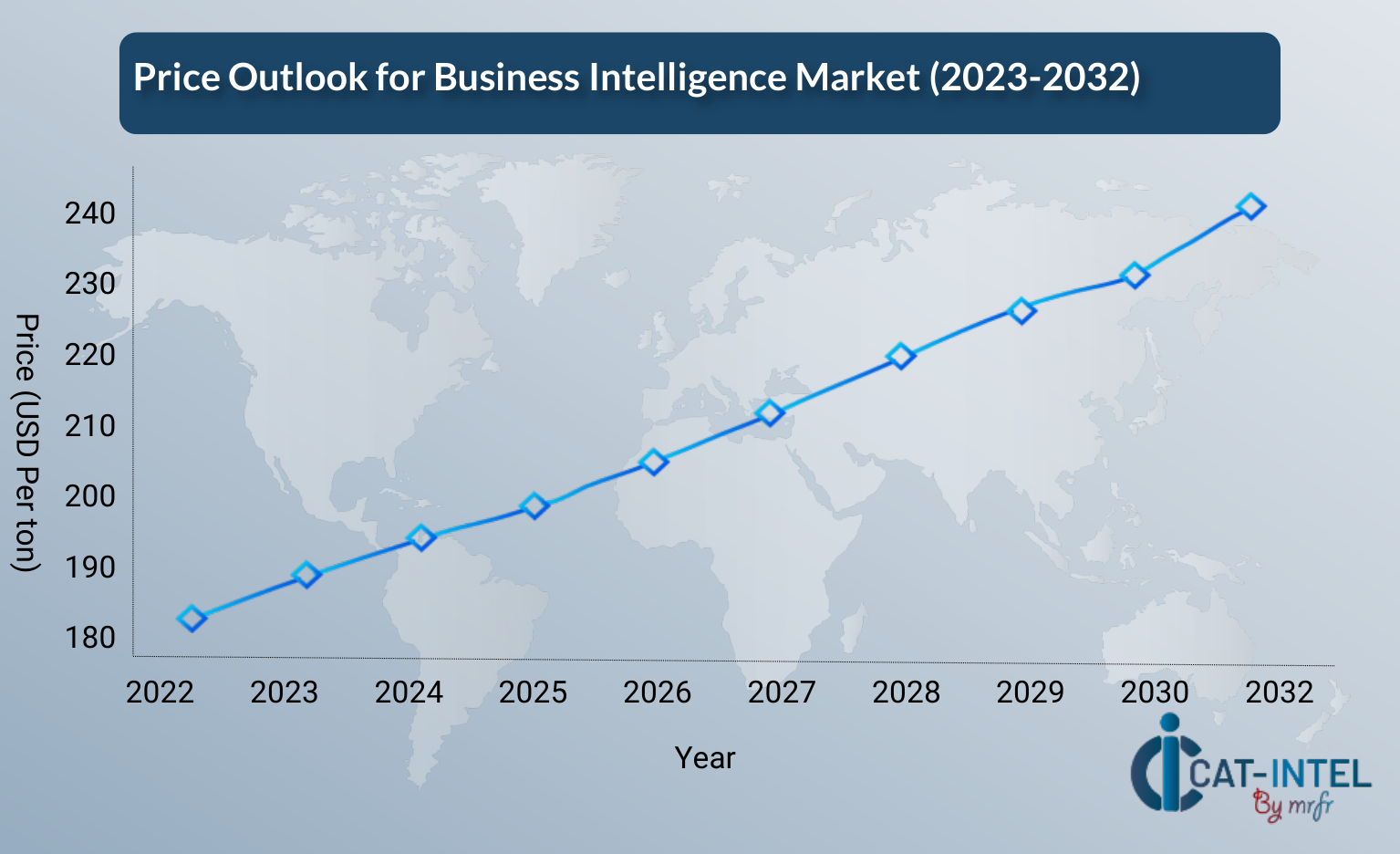
Graph shows general upward trend pricing for business intelligence and growing demand. However, there may be fluctuations influenced by economic conditions, technological advancements, and competitive dynamic.
Efforts to improve operational efficiency, adopt cloud-based solutions, and leverage automation tools can help companies manage costs effectively in the long run. Partnering with technology providers or utilizing scalable BI solutions may also offer cost-effective options.
Despite the potential for increased costs, the focus on innovation, data accuracy, and compliance will be essential for maintaining competitive pricing.
Cost Breakdown for Business Intelligence (BI) Total Cost of Ownership (TCO) and Cost-Saving Opportunities:

- Software Licensing & Subscription Fees (30%)
- Description: This includes the cost of purchasing or subscribing to BI software platforms, which are necessary for data analysis, reporting, and visualization. These tools enable businesses to transform raw data into actionable insights.
- Trends: The shift towards cloud-based BI solutions is driving the growth of subscription-based pricing models. Additionally, there is an increasing demand for scalable solutions that allow businesses to adjust usage and costs according to their needs.
- Labor (XX%)
- Training & Support Services (XX%)
- Infrastructure & Overheads (XX%)
Cost Saving Opportunities: Negotiation Levers and Purchasing Strategies for Business Intelligence:
To optimize procurement and operational efficiency in the Business Intelligence (BI) space, organizations can achieve significant cost savings and improve workflow by refining their purchasing strategies. Building strategic partnerships with BI software providers, cloud service platforms, and consulting firms can help leverage volume discounts, negotiate better terms, and reduce overall costs. Additionally, organizations can explore subscription-based models or enterprise licensing agreements to gain more favourable pricing and flexibility.
Investing in automation and advanced analytics tools, such as AI-driven insights and predictive analytics, can streamline data processing, reduce manual workloads, and enhance decision-making. This not only minimizes operational expenses but also improves the accuracy and timeliness of reports. Adopting cost-efficient, cloud-based BI solutions further reduces the need for expensive on-premises infrastructure and supports scalability, ultimately leading to long-term savings.

Supply and Demand Overview for Business Intelligence: Market Dynamics and Buyer Intelligence for Effective Supplier Relationship Management (SRM)
The Business Intelligence market is experiencing robust growth, driven by the increasing demand for data-driven insights across industries and the ongoing digital transformation. The need for advanced BI tools is rising due to the growing importance of data analysis in decision-making processes, supported by partnerships between organizations, technology providers, and research institutions.
Demand Factors:
- Rising Demand for Data Insights: The growing need for actionable data insights in decision-making across industries, such as finance, healthcare, and retail, is driving the demand for BI tools.
- Expansion in Emerging Markets: Increased access to technology in emerging markets is driving the adoption of BI solutions as companies seek to analyse and leverage local market data for competitive advantage.
- Regulatory and Compliance Requirements: Stricter data privacy laws and regulatory frameworks are increasing demand for BI solutions that can manage and report on data compliance effectively.
- Growth in Data-Driven Industries: As industries such as e-commerce, logistics, and healthcare continue to expand, the demand for specialized BI solutions tailored to these sectors is also growing.
Supply Factors:
- Technological Innovation in BI Solutions: Advancements in AI, machine learning, and data visualization tools are improving the quality and capacity of BI solutions, increasing the supply of advanced analytics tools.
- Access to Skilled Data Professionals: Availability of skilled professionals in data science and BI development impacts supply, with demand for these experts increasing to support growing BI tool adoption.
- Cloud Infrastructure and Platform Capacity: The ability of cloud service providers to scale infrastructure to meet increasing demand for BI solutions plays a crucial role in the supply side, enhancing capacity and flexibility.
- Competitive Pressures in the BI Market: The growing number of BI providers and technologies in the market is pushing companies to innovate and offer competitive pricing, improving the overall service quality but also leading to price fluctuations.
Regional Demand-Supply Outlook: Business Intelligence

The Image shows growing demand for business intelligence in both North America and Asia, with potential price increases and increased Competition.
North America: Dominance in Business Intelligence
North America, particularly the U.S. and Canada, maintains a leading position in the Business Intelligence (BI) market, driven by several key factors:
- Rising Demand for Data-Driven Insights: As organizations across industries increasingly rely on data to make informed decisions, North American companies are adopting BI solutions to enhance operational efficiency, improve customer experiences, and drive growth.
- Advanced Technological Infrastructure: The region boasts a robust technological ecosystem, with cutting-edge data analytics platforms, cloud computing capabilities, and machine learning tools that streamline the BI process and improve decision-making accuracy.
- Stringent Regulatory and Compliance Standards: North America has established stringent data privacy and security regulations, such as GDPR and CCPA, which drive the demand for BI solutions that can ensure compliance while maintaining data integrity and confidentiality.
- Innovation in BI Solutions: North American firms are at the forefront of developing innovative BI tools, such as predictive analytics, AI-driven insights, and data visualization platforms, which improve data accessibility, uncover deeper insights, and accelerate decision-making processes across various sectors.
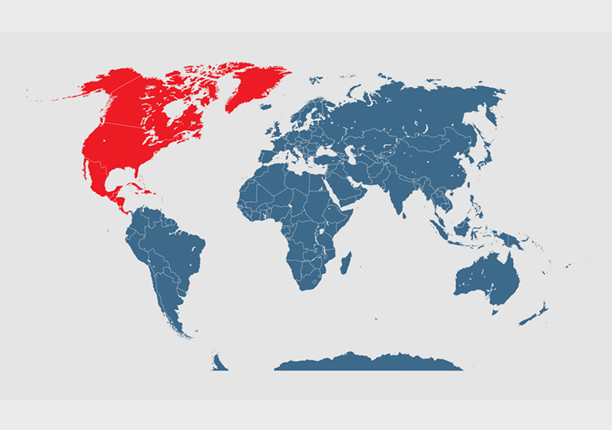
North America Remains a key hub business intelligence can price drivers Innovation and Growth.
Supplier Landscape: Supplier Negotiations and Strategies
The supplier landscape in the Business Intelligence (BI) market is expansive, with a mix of global and regional players offering a range of BI solutions. These suppliers play a pivotal role in shaping market dynamics, driving technological advancements, and influencing pricing structures. The market is highly competitive, featuring prominent multinational firms as well as smaller, specialized providers focusing on niche BI tools and services.
Currently, the supplier landscape is characterized by consolidation among leading BI providers that hold a significant market share. However, smaller firms are gaining traction by offering innovative solutions tailored to specific industries or functionalities, such as predictive analytics or advanced data visualization.
Some key suppliers in the BI market include:
- Microsoft Power BI
- Tableau (Salesforce)
- SAP Analytics Cloud
- Qlik
- IBM Cognos Analytics
- Oracle BI
- Looker (Google Cloud)
- Sisense
- Domo
- MicroStrategy
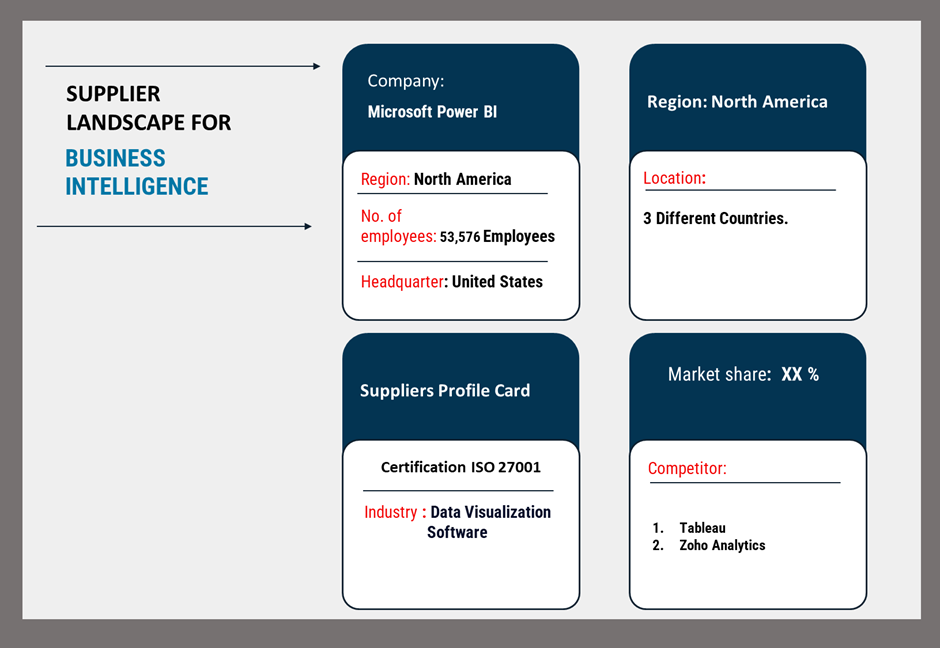
Key Developments Procurement Category Significant Development:
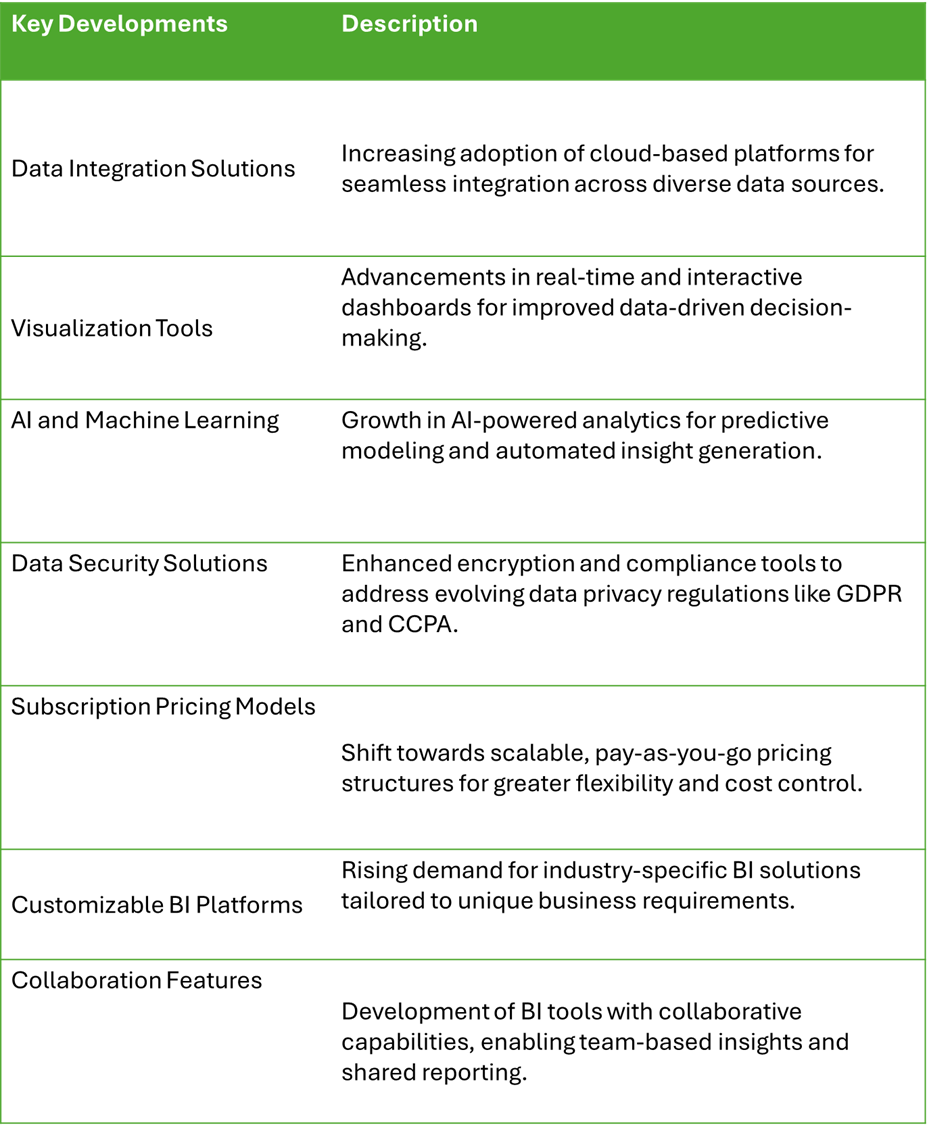
|
Business Intelligence Attribute/Metric |
Details |
|
Market Sizing |
Global Business Intelligence market is projected to reach USD 63.17 billion by 2032, growing at a CAGR of around 7.26% from 2024 to 2032. |
|
Business Intelligence Technology Adoption Rate |
Over 60% of organizations are integrating advanced analytics and visualization tools to enhance decision-making. |
|
Top Business Intelligence Strategies for 2024 |
Focus on leveraging AI-driven insights, enhancing data security, optimizing cloud-based solutions, and enabling real-time analytics. |
|
Business Intelligence Process Automation |
Around 45% of firms have automated data integration, reporting, and analytics processes to improve operational efficiency. |
|
Business Intelligence Process Challenges |
Key challenges include managing data silos, ensuring data privacy, controlling implementation costs, and addressing skill gaps. |
|
Key Suppliers |
Major BI solution providers include Microsoft (Power BI), Tableau, Qlik, IBM Cognos, and Oracle Analytics. |
|
Key Regions Covered |
North America, Europe, and Asia-Pacific, with strong demand in the U.S., Canada, Germany, India, and China due to technological advancements and enterprise adoption. |
|
Market Drivers and Trends |
Growth fueled by digital transformation, increasing demand for real-time insights, regulatory compliance needs, and advancements in AI and machine learning. |
Frequently Asked Questions (FAQ):
Our procurement intelligence services provide detailed insights into the Business Intelligence supplier landscape, identifying top providers. We offer spend analysis, supplier evaluations, and market trends to help you source efficient and cost-effective BI solutions.
We help assess the TCO for Business Intelligence systems by analysing software licensing fees, implementation costs, maintenance expenses, and training needs. Our cost analysis ensures a clear understanding of long-term financial impacts.
Our risk management framework addresses risks like data security, system downtime, and vendor dependency, helping mitigate potential disruptions in the procurement and use of Business Intelligence systems.
We provide Supplier Relationship Management (SRM) services to build strong partnerships with BI solution providers, focusing on collaboration, service quality, and favourable contract terms.
Our procurement best practices include evaluating cloud-based versus on-premises options, supplier categorization, cost benchmarking, and contract management to ensure strategic sourcing decisions.
Digital tools streamline BI procurement by automating supplier performance tracking, analysing market trends, and enabling real-time optimization of sourcing strategies.
Our supplier performance management tools monitor service levels, software updates, and compliance, ensuring BI providers meet quality and reliability standards.
We support negotiations by providing market insights, helping secure competitive pricing, flexible licensing options, and favourable service-level agreements.
Our market analysis tools offer insights into global BI adoption trends, supplier capabilities, and cost forecasts, enabling data-driven procurement strategies.
We provide guidance to ensure BI solutions meet regulatory standards for data privacy, cybersecurity, and industry-specific compliance requirements.
We recommend strategies like diversifying suppliers, adopting scalable cloud solutions, and maintaining contingency plans to mitigate supply chain risks in BI procurement.
Our supplier tracking tools allow you to monitor software performance, service quality, and vendor compliance over time, enabling informed renewal or replacement decisions.
We help identify BI providers committed to sustainable practices, including energy-efficient cloud infrastructure and eco-friendly operations.
Our pricing analysis services benchmark costs across suppliers, evaluate trends, and identify negotiation opportunities to ensure the best value in BI procurement.








